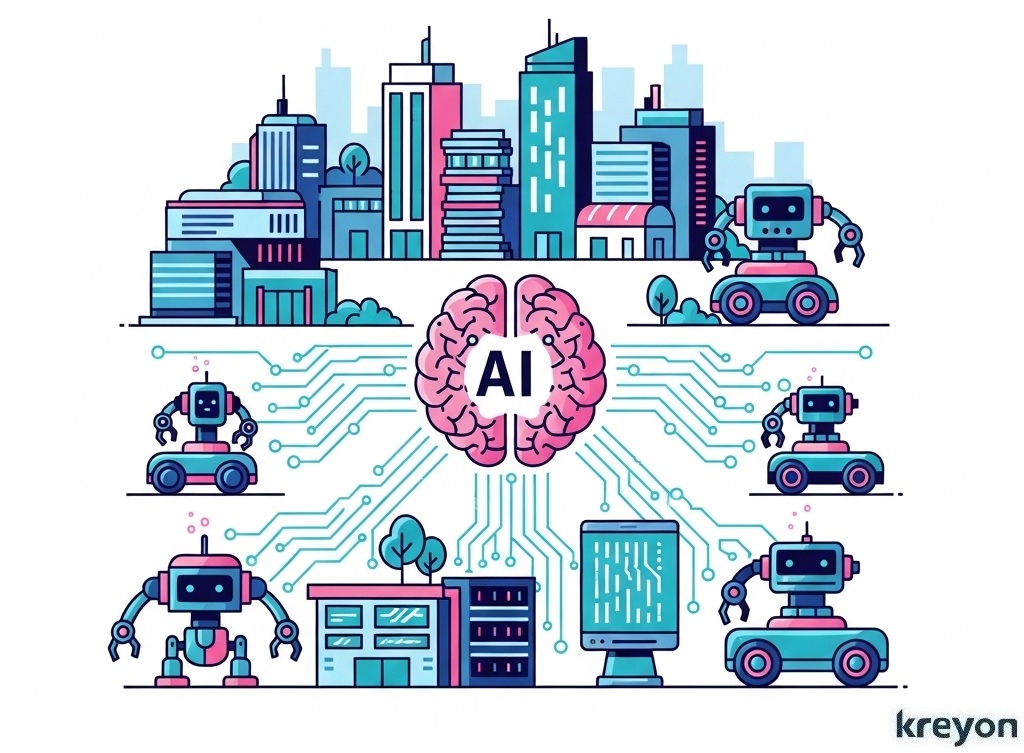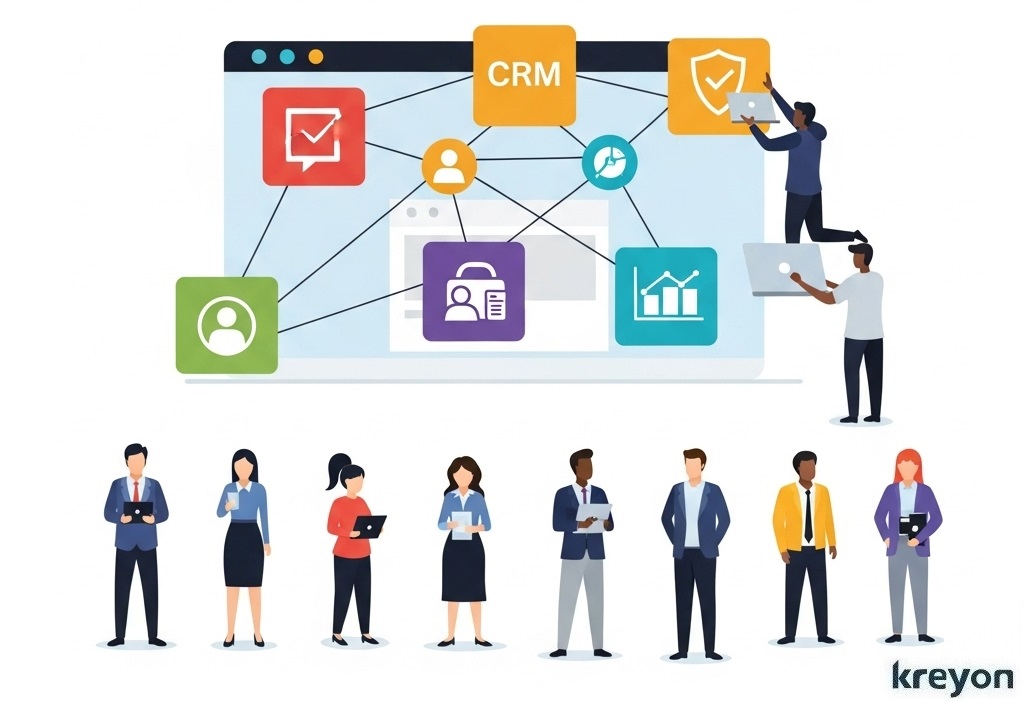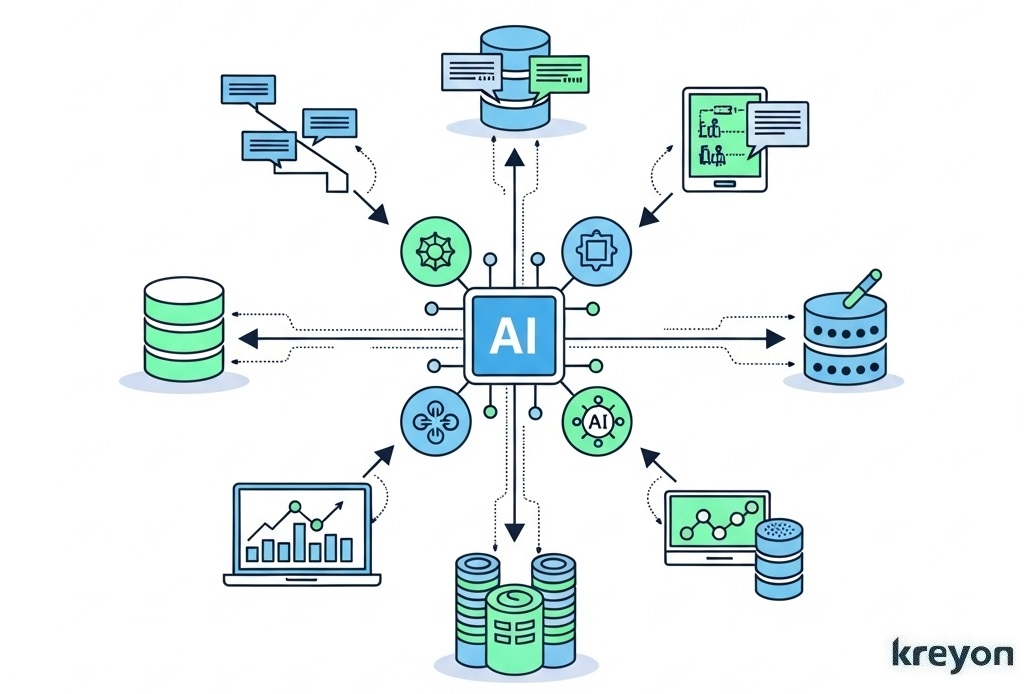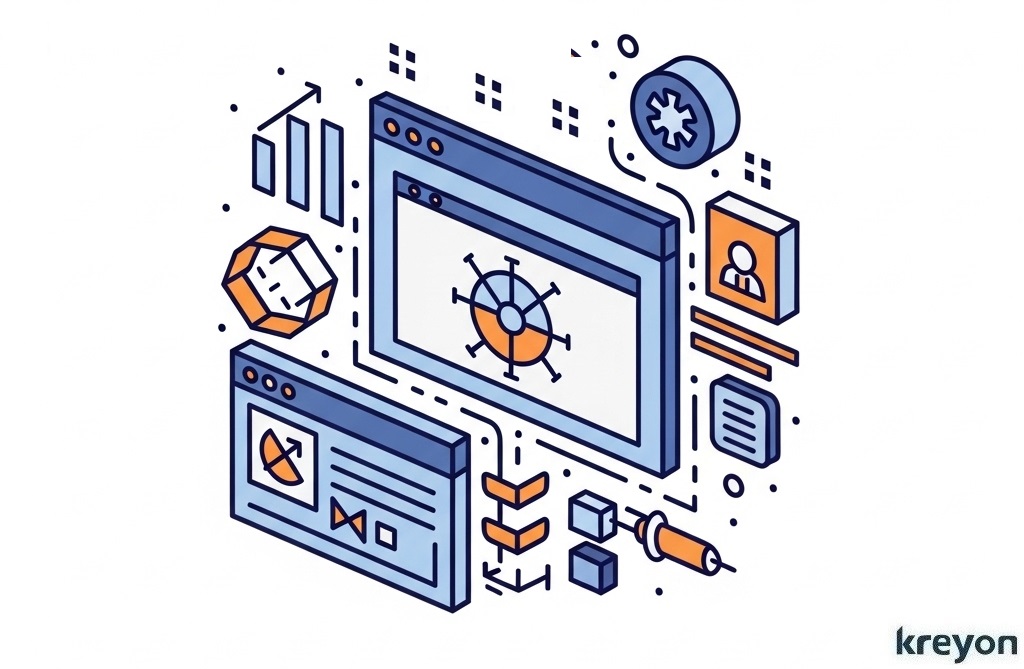AI Integration for Enterprise Automation: A Strategic Imperative for Business Success

Imagine enterprise systems that don’t just execute tasks, but learn, adapt, predict—and act. This is why AI integration for enterprise automation isn’t just a technological fad but a strategic imperative.
From unlocking smarter workflows to boosting agility and ROI, AI integration propels businesses into the future.
If outdated systems feel more like anchors than engines, read on, because automation without intelligence won’t cut it anymore.
Why AI Integration for Enterprise Automation Is Non‑Negotiable
Organizations across industries are discovering that automation alone isn’t enough. To truly transform operations and deliver lasting impact, integration of AI into enterprise automation is essential:
- It ties siloed systems together and injects real-time intelligence into workflows, bridging data gaps and orchestration challenges.
- As Business Insider reports, enterprises must tie AI projects to clear business strategy and embed them within core processes to scale successfully, moving from pilots to enterprise-grade results.
- According to TechRadar, 75% of AI initiatives stall because messy or fragmented data prevents seamless ingestion, making integrated data readiness the true differentiator.
When AI integration powers enterprise automation, businesses move from task-level productivity to system-wide intelligence.
AI Integration for Enterprise Automation

Intelligent ERP & Business Process Automation
Modern enterprises are deploying AI-enhanced ERP systems to automate finance workflows end-to-end. Kreyon’s ERP implementation connects finance, HR, procurement, CRM, inventory management, and more, under one unified platform.
Using AI and machine learning, Kreyon replaces repetitive rule‑based routines with dynamic, pattern‑driven processes. Predictive maintenance, smart supply‑chain planning, and real-time dashboards are all framed by AI-supported decision logic
Chatbots & Digital Assistants for Service Automation
With AI‑driven support agents, Kreyon delivers virtual assistants and chatbots that learn on the go. These systems handle inquiries, escalate complex cases, and continually refine responses—improving customer satisfaction while reducing ticket resolution times.
Data-Driven Analytics & Self-Learning Systems
Kreyon’s real-time data science platform mines unstructured datasets—delivering predictive insights, anomaly detection, and context-aware suggestions. This enables faster decision-making, innovation acceleration, and proactive monitoring across global operations.
IT, AI Ops & Operations
AI Ops platforms merge machine learning, big data, and automation to proactively monitor infrastructure, detect anomalies, and resolve incidents.
According to Gartner and IBM, AIOps can reduce incidents by over 50%, lower cloud costs, and boost incident detection speed by 15–20%. When AI is embedded into IT workflows, operations scale smarter, not harder.
Key Benefits of AI Integration for Enterprise Automation
Unified Data & Real-Time Insights
AI integration breaks down silos, delivering a cohesive, single source of truth across departments, from finance to sales to support. That leads to smarter, faster decisions and higher transparency enterprise-wide reports The Times.
Enhanced Agility & Continuous Learning
Unlike rule-based automation that performs fixed tasks, integrated AI systems adapt over time. Continuous learning AI agents refine their work as they ingest more data, improving efficiency and optimization daily.
Risk Mitigation & Regulatory Compliance
AI wealth of use cases includes continuous fraud detection, anomaly alerts, and compliance tracking. Agents can flag suspicious behavior, maintain audit logs, and simulate risk scenarios proactively, imperative in finance, healthcare, and legal sectors etc.
Cost Reduction & Measurable ROI
McKinsey indicate improvements, for e.g. “AI has enhanced the productivity of field workers by 20% to 30%.”
To add to it, “businesses, which quickly adopted AI-driven supply chain management, experienced operational enhancements…a 15% cost reduction, a 35% decrease in inventory levels, and a 65% increase in service levels.”
The goal is not to replace people, but to elevate them. AI-driven automation frees employees from repetitive work, allowing focus on creativity, decision-making, and relationship-building.
Challenges & Strategic Foundations for AI Integration for Enterprise Automation

Data Variety & Integration Overload
The biggest barrier isn’t lack of AI models, it’s messy, siloed, and inconsistent data. Firms must confront the “silent killer of AI”: lack of unified schemas and unmanaged APIs. A hybrid “agentic integration architecture” combining AI pattern recognition with human governance is essential to break this gridlock.
Legacy Systems & Technology Debt
Enterprises still reliant on legacy ERPs, custom CRMs, or weak API connectivity face integration complexity. The key is using platform-based AI tools (e.g. UiPath, Microsoft Power Automate, Zapier, Snowflake, Google Vertex AI) with pre‑built connectors and low-code UX to speed alignment and reduce technical friction.
Organizational Readiness & Cultural Alignment
AI won’t succeed if executives and teams aren’t aligned. Business Insider and IBM emphasize creating grassroots AI champions, tying AI metrics to business objectives, training leaders in ethics, and embedding AI literacy across the enterprise to drive adoption.
Agent Orchestration v/s Piecemeal Tools
Deploying isolated AI agents without a unified orchestration layer results in fragmented automation stacks. Enterprises need orchestration frameworks that turn agents into a cohesive system, not a disjointed collection of bots.
Implementation Roadmap: Best Practices for AI Integration for Enterprise Automation

- Map high-value workflows and pain points: Begin with use cases offering rapid ROI—finance, customer support, onboarding, decision support.
- Prepare your data foundation: Clean, harmonize, and govern data before hooking it into AI systems—bad input yields bad insights.
- Choose scalable platforms & connectors: Use low-code AI automation tools like UiPath, Power Automate/Azure AI, Zapier, Vertex AI, Snowflake for seamless integration and governance support.
- Champion from within: Identify executive sponsors, train teams in ethics and AI literacy, and embed AI champions at multiple levels to ensure adoption.
- Orchestrate agents, don’t fragment: Use orchestration architectures to coordinate AI agents across workflows—avoiding “spaghetti stack” chaos.
- Monitor & iterate continuously: Use dashboards to track performance metrics, optimize processes, and evolve AI workflows over time.
Conclusion
AI integration for enterprise automation is no longer optional, it’s a strategic imperative for businesses determined to thrive. By embedding AI into workflows, enterprises unlock smarter decision-making, cost savings, risk management, and sustained productivity gains.
The most successful organizations pair AI tools with data readiness, orchestration platforms, and human-centered change management.
Kreyon Systems helps enterprises transform from reactive task automation to proactive, intelligent operations. If you’d want mapping your AI use cases, integration roadmap, or implementation support, please contact us.
